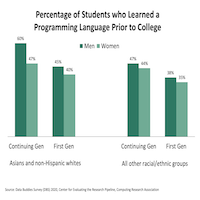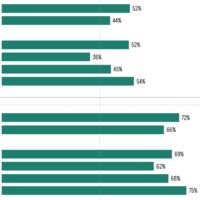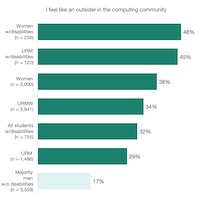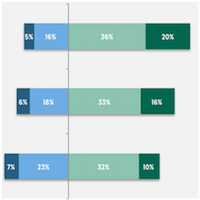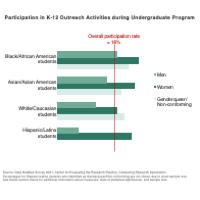
Rates of Participation in K-12 Outreach Vary Among Undergraduates in Computing
CRA’s Data Buddies Survey 2021 data indicate that 16% of undergraduates in computing fields have been involved in K-12 outreach during their degree program. Participation rates across different racial and ethnic groups varied. Within racial/ethnic groups, participation rates also varied as a function of gender identity.


